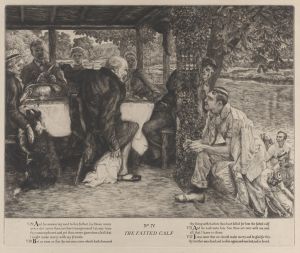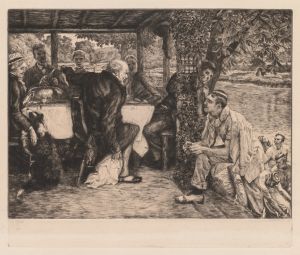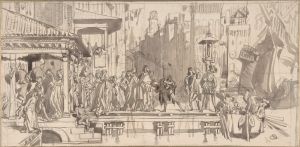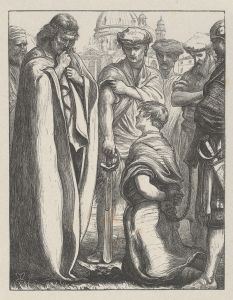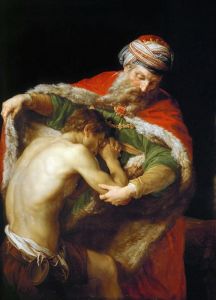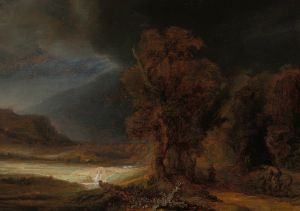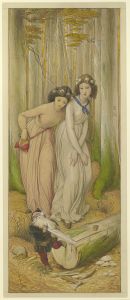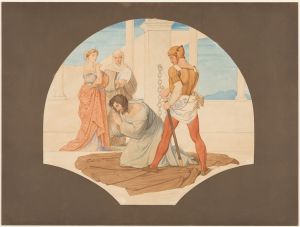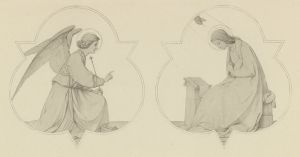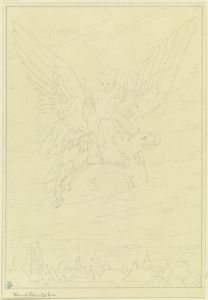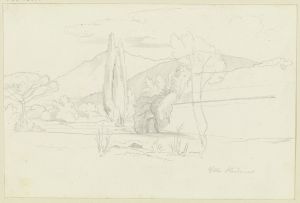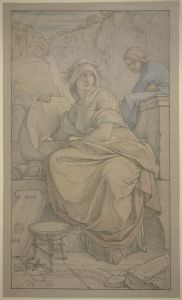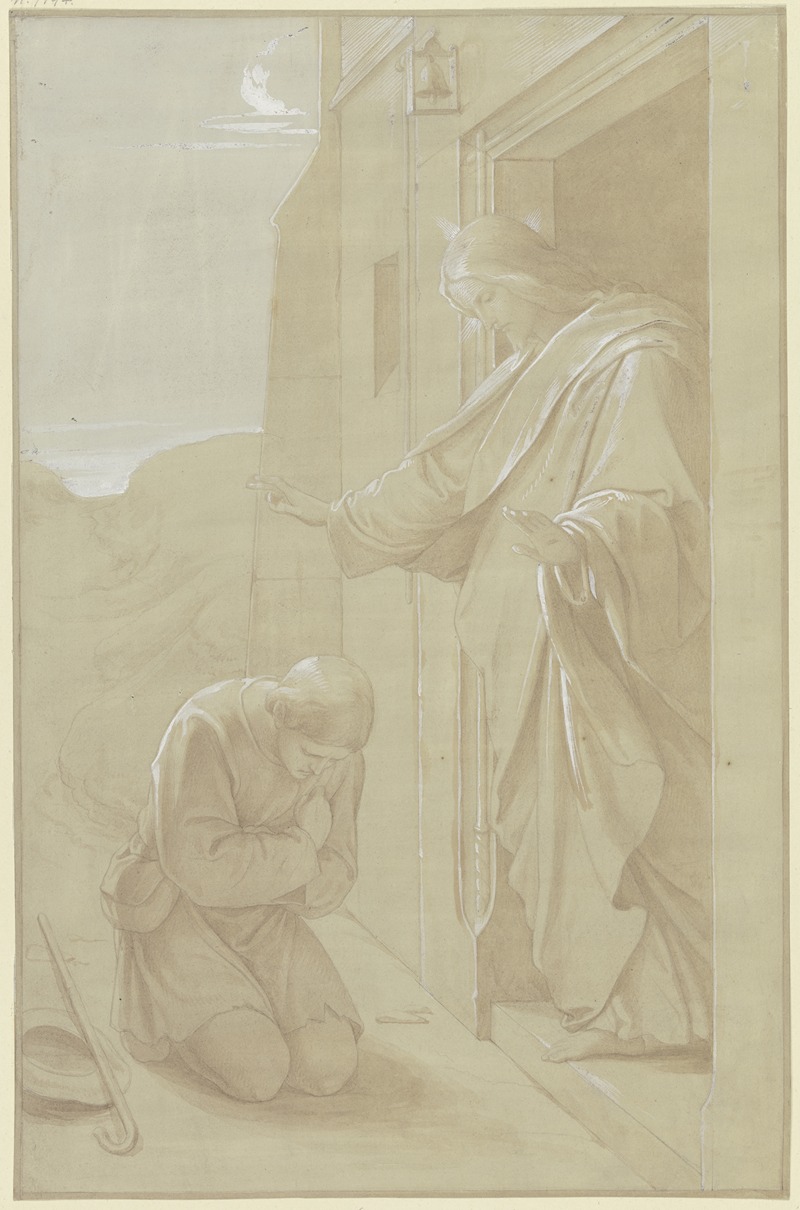
Rückkehr des verlorenen Sohnes, Christus als Vater
A hand-painted replica of Eduard von Steinle’s masterpiece Rückkehr des verlorenen Sohnes, Christus als Vater, meticulously crafted by professional artists to capture the true essence of the original. Each piece is created with museum-quality canvas and rare mineral pigments, carefully painted by experienced artists with delicate brushstrokes and rich, layered colors to perfectly recreate the texture of the original artwork. Unlike machine-printed reproductions, this hand-painted version brings the painting to life, infused with the artist’s emotions and skill in every stroke. Whether for personal collection or home decoration, it instantly elevates the artistic atmosphere of any space.
Eduard von Steinle was a notable 19th-century German painter associated with the Nazarene movement, which sought to revive honesty and spirituality in Christian art. One of his significant works is "Rückkehr des verlorenen Sohnes, Christus als Vater" (The Return of the Prodigal Son, Christ as Father). This painting reflects Steinle's deep engagement with religious themes and his commitment to depicting biblical narratives with emotional depth and spiritual insight.
The painting illustrates the parable of the Prodigal Son, a story from the Christian Bible found in the Gospel of Luke 15:11-32. This parable tells of a young man who squanders his inheritance but is ultimately welcomed back by his forgiving father. Steinle's interpretation is unique in that it portrays Christ as the father figure, emphasizing the Christian theme of divine forgiveness and redemption. This choice underscores the theological interpretation that Christ embodies the ultimate source of forgiveness and love.
Steinle's work is characterized by its detailed composition and the use of symbolism to convey deeper meanings. In "Rückkehr des verlorenen Sohnes, Christus als Vater," Steinle employs a rich palette and meticulous attention to detail to bring the biblical scene to life. The figures are rendered with a sense of realism and emotional expressiveness, which is a hallmark of Steinle's style. The painting captures the moment of reconciliation, with the prodigal son kneeling before Christ, who is depicted with open arms, symbolizing acceptance and mercy.
The Nazarene movement, to which Steinle belonged, was founded in the early 19th century by a group of young German artists who sought to return to the spiritual and artistic values of the Renaissance and the Middle Ages. They rejected the neoclassical style that was prevalent at the time, favoring instead a more sincere and heartfelt approach to religious subjects. Steinle, as a prominent member of this movement, often infused his works with a sense of piety and devotion, aiming to inspire viewers to reflect on their own spiritual journeys.
Steinle's painting not only reflects his personal religious convictions but also serves as a testament to the broader cultural and artistic currents of his time. The 19th century was a period of significant religious and philosophical exploration in Europe, and artists like Steinle played a crucial role in shaping the visual language of spirituality. His works, including "Rückkehr des verlorenen Sohnes, Christus als Vater," continue to be appreciated for their ability to convey complex theological ideas through accessible and emotionally resonant imagery.
While specific details about the painting's provenance or its current location may not be widely documented, Steinle's contributions to religious art remain influential. His ability to blend narrative storytelling with profound spiritual themes ensures that his works are studied and admired by art historians and enthusiasts alike. Through paintings like "Rückkehr des verlorenen Sohnes, Christus als Vater," Eduard von Steinle has left a lasting legacy in the realm of religious art, demonstrating the enduring power of visual storytelling in exploring the depths of human experience and divine grace.





